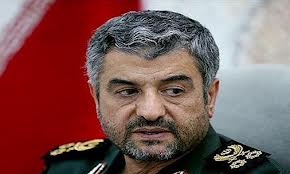Iran at Saudi Arabia’s frontiers
Abdulrahman al-Rashed
Monday, 2 March 2015/Al Arabiya
Iran’s fingerprints are everywhere. Its activities expand throughout the region, mostly around Saudi Arabia, in Iraq, Yemen, the Gulf, Syria and Lebanon, where it is involved in politics, media, oil, weaponry and religion. So is it an expanded confrontation, or are the region’s disturbances, resulting from the Arab Spring and its collapses, the only reason for what is happening?
The dispute with Iran is old. Some of it has been inherited, and most is the result of a policy followed by Iran’s leadership, which does not hide its aspiration to expand and export its revolution to the region. Despite the enthusiasm and propaganda, it took Iran 34 years to expand. As such, its gains have been humble given the long time period.
Short-lived reconciliation
Riyadh and Tehran previously met in the wake of confronting Saddam Hussein’s invasion of Kuwait, and reached a reconciliation agreement under Iranian President Hashemi Rafsanjani. Tensions did end, but reconciliation did not last more than five years, after the Saudis realized that Iran had not stopped its expansionism. Amid the silent battles between Riyadh and Tehran, the region calmly forms into alliances
Iran is currently in an offensive state, the likes of which we have not seen in modern history. It is directly fighting in Syria and Iraq, and has proxies in Lebanon, Gaza, Yemen and Bahrain. It also has a presence in Sudan, although President Omar al-Bashir claims he has shut down all Iranian offices.
It is due to Iran’s clear offensive actions that we see Saudi Arabia in a state of defense of its traditional areas – once directly, in Bahrain, but mostly by supporting allies, such as in Yemen and Syria.
Yemen’s cost to Iran. Yemen is the latest Iranian venture, but Tehran is incapable of succeeding there. Regardless of how much effort it makes via the Houthi rebels and ousted President Ali Abdullah Saleh, Yemen remains socially and politically close to Saudi Arabia.
Yemen will cost Iran more than it thinks as time passes and as the struggle worsens. Foreign parties, such as Western countries, will realize that Iran’s expansionist appetite is not only a threat to countries such as Saudi Arabia, Egypt and the rest of the region, but it also targets areas of stability and supports violent groups that threaten the world. This has been the nature of the Iranian regime since the 1980s. It imitates the old Soviet model by supporting what it calls “liberation movements in the third world,” for the sake of harming regimes that do not agree with its political path.
Regional interference
Iran also focuses on supporting certain groups in the region against central governments. In Lebanon, it supports Hezbollah and has weakened the central government, although the latter does not oppose Iran in Lebanon’s surroundings.
Similarly, Iran has supported Hamas against the Palestinian Authority, although the latter was never against Tehran. Iran has supported the Houthis for years, although Saleh’s regime then had good relations with Tehran.
In Iraq, Iran’s policy and involvement is much clearer. It supports militias and parties more than it supports the central government. Tehran supports the so-called popular mobilization forces in Iraq as an alternative to the national army, parts of which do not agree with Iran.
Amid the silent battles between Riyadh and Tehran, the region calmly forms into alliances. In this context, and that of an arms race, all parties are re-evaluating their military capabilities and looking to strengthen them. If Iran does not end its incursions in the Gulf and beyond, and if it continues to reject solutions to major struggles such as Syria’s, then confrontations will increase and their severity will worsen.
It will become harder to control disputes and their repercussions. Why do we ask Iran, and not Saudi Arabia, to stop? Because Tehran is always on the offensive while Riyadh is on the defensive, just like what is happening in Yemen.
إيران على الجبهات السعودية
عبد الرحمن الراشد/الشرق الأوسط/02 آذار/15
في كل الاتجاهات تجد بصمات إيران.. نشاطها محموم في عموم المنطقة، تحيط بشكل أكثر بالسعودية.. في العراق واليمن والخليج، وكذلك في سوريا ولبنان، وفي مجالات السياسة والإعلام والنفط والسلاح والدين. فهل هي مواجهة واسعة، أم إن الظروف المضطربة للمنطقة نتيجة فوضى الربيع العربي وانهياراته، هي الفاعل الوحيد، والجميع يدور في فلكها رغما عنه؟!
الخلاف مع إيران قديم، بعضه موروث، وأكثره يعبر عن سياسة القيادة الإيرانية التي لا تكتم سر طموحها التوسعي منذ وصولها للحكم، عندما توعدت صراحة بأن تصدر ثورتها إلى المنطقة. إنما رغم الحماس والدعاية، فإن الأمر استغرق منها 34 عاما حتى تتمدد. ولو حسبنا الزمن، والأحداث الجسام، والتكاليف البشرية، والمادية، فإن المكاسب الإيرانية متواضعة مقارنة باستثمار استهلك منها ثلاثة عقود.
وقد سبق أن التقت الرياض وطهران، في أعقاب مواجهة غزو صدام حسين للكويت، وعقدا اتفاق مصالحة في زمن الرئيس الإيراني هاشمي رفسنجاني، وبالفعل انتهت التوترات بما فيها المعارضة، والاختلافات السياسية. لكن المصالحة لم تدم أكثر من خمس سنوات حتى اكتشف السعوديون أن الجار الإيراني لم يكف عن نشاطه التصديري، لذا أعيدت المصالحة إلى الثلاجة. إيران الآن في حالة هجوم لا مثيل لها في تاريخنا المعاصر، حيث تقاتل مباشرة في سوريا والعراق، وتنشط بالنيابة في لبنان وغزة واليمن والبحرين. ولها وجود في السودان، رغم أن البشير يزعم أنه أغلق المكاتب الإيرانية.
وبسبب هذا التطويق الواضح من إيران، نرى السعودية في حالة دفاع عن مناطقها التقليدية، مرة مباشرة كما في البحرين، وغالبا بدعم الحلفاء كما في اليمن وسوريا. واليمن آخر محطاتها، التي لا أتصور أن طهران قادرة على النجاح فيها، مهما بذلت عبر المتمردين الحوثيين واستخدمت الرئيس المعزول صالح، فهي منطقة قريبة اجتماعيا وسياسيا من السعودية، وستكلف إيران أكثر مما تتخيل مع مرور الوقت وتعمق النزاع. وسيجد الفرقاء الخارجيون، مثل الدول الغربية، أن توسع شهية النظام الإيراني وتمددها في المنطقة ليس خطرا على دول مثل السعودية ومصر والبقية من الدول الإقليمية المتضررة فقط، بل يستهدف أيضا مناطق الاستقرار، ويدعم جماعات العنف التي تهدد العالم. وهذه طبيعة النظام الإيراني منذ الثمانينات، الذي يقلد النموذج السوفياتي القديم، بدعم ما كان يسميه «حركات التحرر في العالم الثالث»، بهدف ضرب الأنظمة التي لا تتفق مع خطه السياسي. فقد ركزت إيران في دعمها على التنظيمات في المنطقة ضد المراكز، حتى في لبنان أبقت على حزب الله تنظيما تابعا لها ودعمته وأضعفت النظام المركزي رغم أنه لا يعارض التوجهات الإيرانية في محيط لبنان، وكذلك فعلت مع حماس ضد السلطة الفلسطينية مع أنها لم تعاد إيران، وساندت الحوثيين لسنوات مع أن نظام صالح حينها كان على علاقة جيدة مع طهران. ونراها أكثر وضوحا والتزاما في العراق، حيث تدعم الميليشيات والأحزاب الموالية لها أكثر من دعمها للحكومة المركزية، وهي وراء فكرة ميليشيات «الحشد الشعبي» هناك بديلا للجيش الذي يتشكل من القوى العراقية التي لا تتفق كلها مع إيران.
وفي أجواء المعارك، التي لا دخان لها بين الجارتين السعودية وإيران، تتشكل المنطقة بهدوء من أحلاف، وفي هذا الإطار تعيد كل القوى تقييم قدراتها العسكرية وتعزيزها في سباق تسلح محموم. ودون أن تتوقف إيران عن التوغل في عمق شرق الخليج وما وراءه، وما لم تقبل بحلول للنزاعات الضخمة مثل سوريا، فإننا سنرى ارتفاعا في المواجهات عددًا وحدة، وسيرتفع التوتر بدرجة لن يكون سهلا معها السيطرة على الخلافات ومخلفاتها لاحقا. أما لماذا نطلب من إيران أن تتوقف، وليست السعودية؟ فالسبب هو أن نظام طهران دائما في حالة هجوم، والرياض في حالة دفاع، كما حدث في مصر، ويحدث اليوم في اليمن.





















